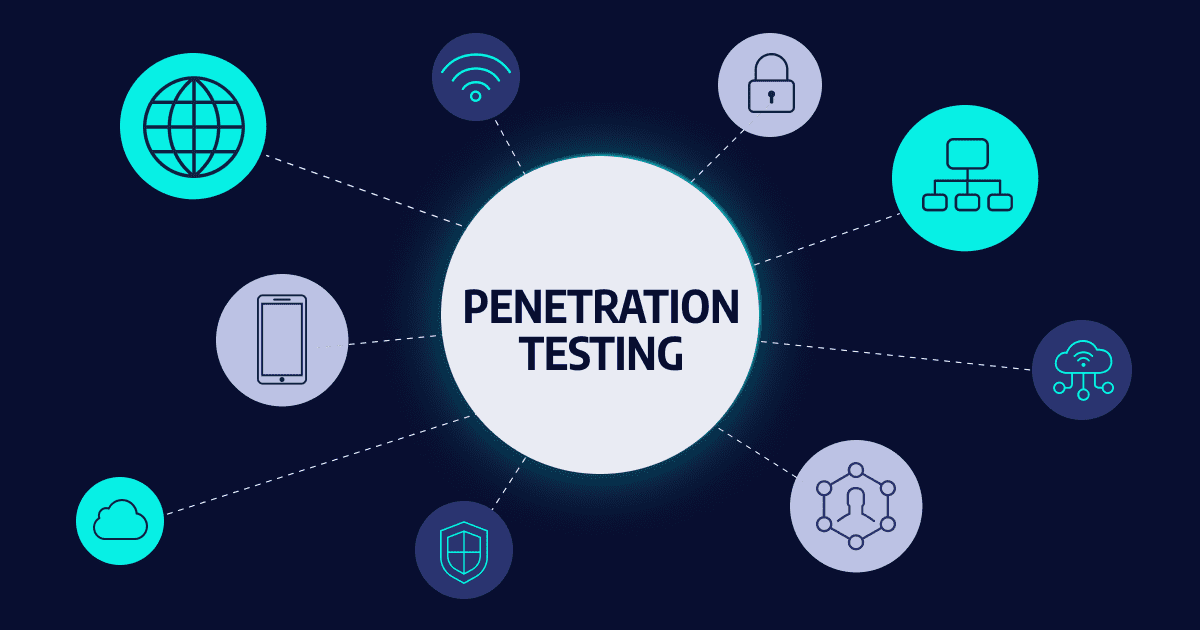In today’s digital landscape, ensuring the security of your cloud infrastructure is paramount. Cloud penetration testing, a crucial aspect of cybersecurity, is instrumental in identifying vulnerabilities and strengthening your cloud environment’s defenses. This comprehensive guide delves into the world of cloud penetration testing, covering its types, benefits, methodologies, tools, and best practices to help you fortify your data against potential cyber threats.
Cloud penetration testing, also known as cloud pen testing, is a proactive approach to assess the security of cloud-based systems and applications. By simulating real-world cyber attacks, organizations can uncover weaknesses in their cloud infrastructure and implement remediation before malicious actors exploit them. This guide serves as a roadmap to navigate the intricacies of cloud penetration testing, empowering you to secure your cloud environment effectively and mitigate risks proactively.

Types of Cloud Penetration Tests
Network Penetration Testing
Network penetration testing involves assessing the security of network infrastructure within a cloud environment. By mimicking various attack scenarios, vulnerabilities like open ports, misconfigured devices, or weak encryption protocols are identified. This type of test helps in fortifying network defenses and preventing unauthorized access to sensitive data stored in the cloud.
Web Application Penetration Testing
Web application penetration testing focuses on vulnerabilities in cloud-hosted web applications. Through simulated attacks, security flaws like SQL injection, cross-site scripting (XSS), or authentication bypass are uncovered. This type of test ensures that web applications are secure from cyber threats, maintaining the confidentiality and integrity of user data stored in the cloud.
Infrastructure Penetration Testing
Infrastructure penetration testing evaluates the security of cloud infrastructure components such as servers, databases, and storage systems. It aims to detect weaknesses like misconfigurations, unpatched software, or insecure network protocols that could be exploited by malicious actors. Conducting this test helps in enhancing the overall security posture of the cloud environment.
Cloud Configuration Assessment
Cloud configuration assessment involves reviewing the configuration settings of cloud services to ensure they align with security best practices. By examining settings related to data encryption, access controls, logging, and monitoring, organizations can identify and rectify misconfigurations that might expose sensitive data to unauthorized access. This type of assessment is crucial for maintaining a robust and secure cloud infrastructure.

Methodologies for Cloud Penetration Testing
Reconnaissance and Information Gathering
Before initiating a cloud penetration test, thorough reconnaissance and information gathering are imperative. This phase involves identifying target assets, determining potential entry points, and understanding the cloud environment’s architecture. By conducting comprehensive reconnaissance, testers can create a strategic plan to simulate realistic attack scenarios and effectively assess the security posture of the cloud infrastructure.
Vulnerability Assessment and Exploitation
In the vulnerability assessment and exploitation phase, penetration testers leverage various tools and techniques to identify vulnerabilities within the cloud environment. By simulating real-world attack methodologies, testers exploit these vulnerabilities to assess the system’s resilience against malicious activities. This step provides valuable insights into the effectiveness of existing security measures and helps prioritize remediation efforts to enhance the cloud infrastructure’s robustness.
Post-Exploitation and Reporting
Post-exploitation activities involve analyzing the impact of successful penetrations, escalating privileges, and maintaining access within the compromised cloud environment. This phase aims to mimic the actions of a malicious actor post-breach to evaluate the extent of damage and potential risks. Subsequently, a comprehensive report detailing the findings, exploitation techniques, and recommendations for mitigating identified vulnerabilities is generated to guide organizations in strengthening their cloud security posture.

Essential Tools for Cloud Penetration Testing
Cloud-specific Vulnerability Scanners
Cloud-specific vulnerability scanners are essential tools designed to detect and assess vulnerabilities specific to cloud environments, providing targeted assessments for cloud infrastructure. These tools help identify weaknesses in configurations, unauthorized access points, and potential security gaps unique to cloud platforms, aiding in the proactive mitigation of risks.
Network Traffic Analyzers
Network traffic analyzers play a vital role in cloud penetration testing by monitoring and analyzing network traffic patterns. These tools enable cybersecurity professionals to detect abnormalities, unauthorized access attempts, and potential threats within the cloud network infrastructure. By capturing and examining data packets, network traffic analyzers enhance visibility and aid in identifying suspicious activities.
Web Application Scanners
Web application scanners are indispensable tools for evaluating the security of web applications hosted in the cloud. These scanners perform automated tests to identify common vulnerabilities like SQL injection, cross-site scripting (XSS), and insecure authentication mechanisms. By scanning web applications proactively, organizations can fortify their defenses against cyber threats targeting cloud-hosted applications.
Cloud Configuration Assessment Tools
Cloud configuration assessment tools are instrumental in evaluating the compliance and security posture of cloud configurations. These tools help assess cloud resources, configurations, and permissions against industry standards and best practices. By identifying misconfigurations, excessive permissions, and insecure settings, organizations can remediate vulnerabilities and strengthen the security of their cloud environments effectively.
